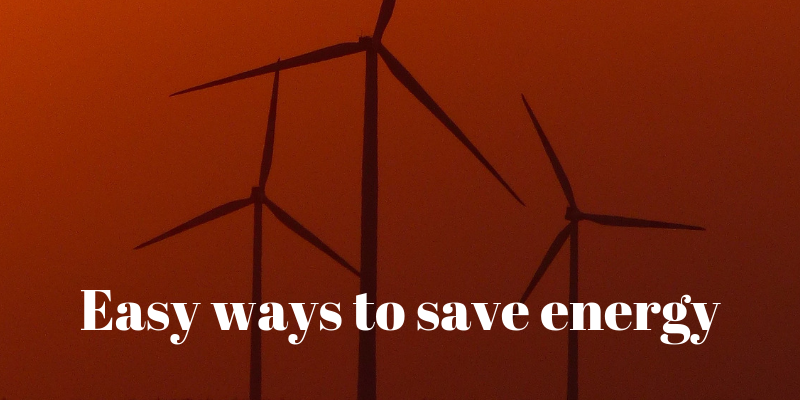The curious case of Energy Generation vs. Energy Efficiency
The energy requirements of the world has been increasing day by day and there are numerous policies to add power generation plants to the existing capacity. There are also lot of policies to increase the renewable sources of power generation. While it is heartening to see lot of initiatives are being taken to promote renewable sources such as wind, solar, hydro, hydel and geothermal, there is another aspect, which needs much more attention than it deserves. It is the energy efficiency. Energy efficiency is the process of reducing the input power, without compromising on the output quality. For example, instead of using a 45 W (tube light + choke) fluorescent tube light, a 22 W LED tube light can be used to produce the same lighting output, thereby reducing the power consumption by 50%. There are several other methods to consume power in a more efficient way.
The planning of energy generation, if done along with proper energy efficient process will help in saving substantial amount of money. To generate 1 MW of energy, it may cost up to Rs. 4 crore, whereas to save up to 1 MW of power, it will cost less than Rs. 1 crore.
The Indian power generation capacity was a mere 293 TWh in 1990 and it grown to 1,423 TWH in 2016, with a 5% yearly growth making it the fifth largest power consumer in the world. The total world electricity generation has grown from 11,894 TWh in 1990 to 24,660 TWh in 2016. While the capacity addition helps in meeting the ever growing power requirements, there are also problems associated with the capacity addition, some of which are listed below.
-
Deforestation is a major hurdle when a new power plant is being set up. The new power plant is constructed in new areas outside the city / town limits and the forest area is usually wiped out, thus erasing the green cover, which is already depleting
-
Sometimes, the people who live in the surrounding areas are forced to move to a new place citing safety issues.
-
The conventional sources of power which are predominantly non – renewable pose a serious environmental threats. The ozone layer is also fast depleting by emission of poisonous substances from these plants.
-
Combustion is a major process in many of the non renewable power generation stations, thereby adding to the pollution levels in the world.
-
The windmills pose a serious threat to the existence of birds as the flying pattern of many birds are affected and many have died by coming under the blades of the windmill.
-
The oil which is a major source of conventional sources of power is fast depleting.
-
The generation of electricity via conventional sources produce lot of CO2, leading to pollution, posing a serious environmental threat.
-
The combustion of fossil fuels lead to acid rain, where the acidic levels in the rain are unusually high. The acid rain impacts the health of forest ecosystem.
-
The level of air toxins have been increasing due to the rise in the conventional electricity production methods.
-
Large fossil fuel plants and nuclear plants consume numerous amount of water.
-
The effluents from the power plants are sometimes discharged into water bodies, thus leading to water pollution.
-
The solid wastes, which are, byproducts of the power plants are usually dumped in a land area and these wastes are left to remain there forever, making the land toxic.
On the other hand, there are several ways, by which energy can be consumed in an efficient leading a reduced power consumption or negligible power consumption in some cases. Below are the some of the ways of consuming power in a more efficient manner.
-
Usage of LED Lights in place of conventional lights reduced power up to 80%, compared to conventional power sources.
-
The usage of daylighting products such as solar light pipes and other related advanced daylighting products can replace the electrical lighting requirements in the day time.
-
They also reduce / eliminate the heat that comes along with the light from the daylighting products, thereby reducing the ventilation requirements.
-
Turbo ventilators fixed at the rooftop reduce the temperature inside the building thereby reducing the cooling requirements.
-
The AC savers which can be retrofitted to existing Air Conditioners can save up to 35% of electricity consumed by air conditioners.
-
The chiller chiller plants can be made energy efficient by applying certain energy saving techniques, which will be discussed in a separate post.
-
Solar water heaters can be used as pre-feeder to boilers, thereby reducing the power consumption.
-
Energy Management systems, which aggregates the entire energy consumption, can be implemented to monitor energy and find out the energy leakage and potential energy saving areas.
-
Motors and compressors can be made energy efficient, by implementing certain energy efficient measures, which will be discussed in a separate post.
-
Energy efficient fans can be used which save almost 70% energy when compared to conventional fans.
-
Appliances star rated by the Bureau of Energy Efficiency (B.E.E.) helps is substantial power savings.
Thus as listed above there are numerous ways to reduce power consumption and to utilise energy in an efficient way. Keep looking forward for more energy saving and energy efficiency tips. Also please feel free to provide your feedback.


